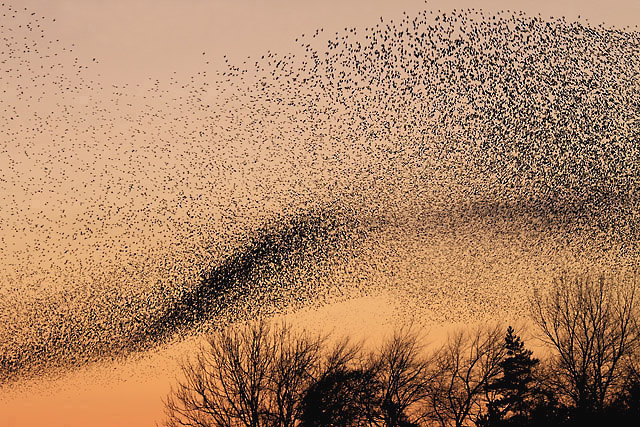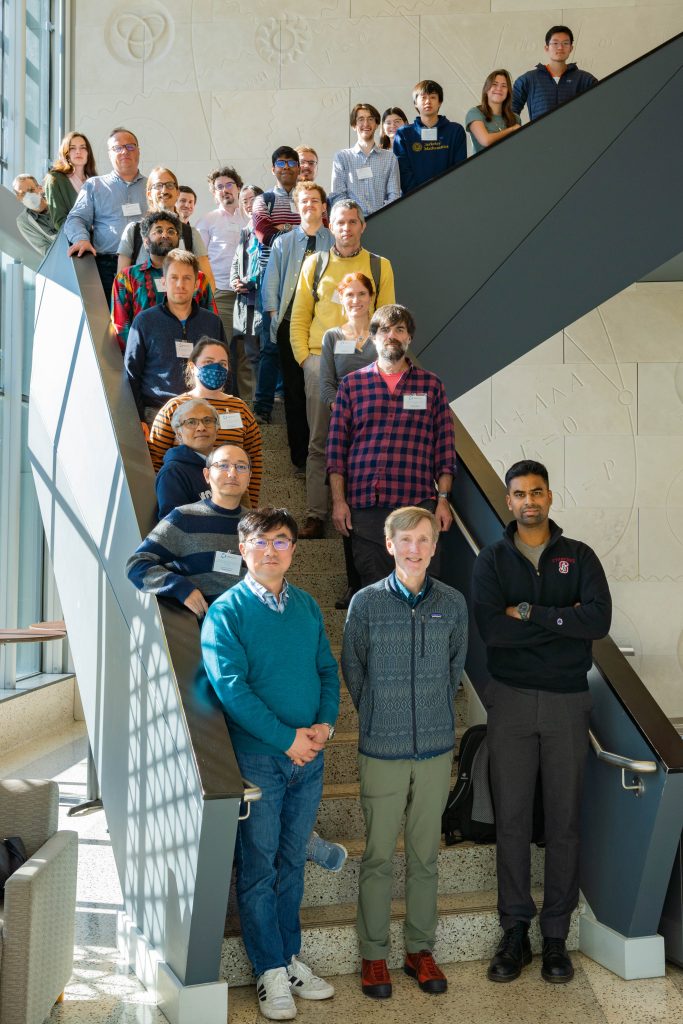ScheduleParticipant ListView Videos
Organized by:
- Yang-Hui He (London Institute for Mathematical Sciences)
- Abhiram Kidambi (Max Planck Institute for Mathematics, Leipzig)
- Kyu-Hwan Lee (University of Connecticut)
- Thomas Oliver (University of Westminster)
Mathematicians have studied elliptic curves for many decades, owing to their beautiful abstract structure, powerful applications in number theory and algebraic geometry, and practical relevance in cryptography. It is surprising, therefore, that the socalled murmuration phenomenon was first observed only in 2022.
Murmurations of elliptic curves were first discovered in 2022 in the context of applying machine learning to datasets of elliptic curves. This murmuration phenomenon can be thought of as striking, unexpected oscillatory patterns in the statistics of a large families of elliptic curves. Murmurations have turned out to be ubiquitous for arithmetic and automorphic objects such as higher genus curves, modular forms, and Maass forms. Though some cases of murmuration have been rigorously proven, and the relationship between murmurations and $1$-level densities of zeroes of $L$-functions have been made clear, the current status of understanding of murmurations is still in its nascent stage, and many questions remain open. This workshop will provide the opportunity to report on recent developments in the study of murmurations and to gather together a wide array of perspectives with a view towards answering open questions and developing structural theorems and applications. Furthermore, possible extensions of the murmuration phenomenon to K3 surfaces and Calabi–Yau 3-folds will be investigated by bringing together researchers in arithmetic geometry and string theory, who have been establishing databases for these objects and applying machine-learning tools to understand their arithmetic structures.


Talk Schedule
| Time | Title | Speaker | Location |
| 8:30am | Breakfast | N/A | SCGP Cafe |
| 9:30am | Murmurations of arithmetic L-functions | Andrew Sutherland | SCGP 102 |
| 10:30am | Coffee Break | N/A | SCGP Cafe |
| 11:00am | Murmurations of Maass forms | Min Lee | SCGP 102 |
| 12:00pm | Lunch | N/A | SCGP Cafe |
| 1:00pm | Numerical Investigation of Lower Order Biases in Moment Expansions of One-Parameter Families of Elliptic Curves | Steven Miller and Timothy Cheek | SCGP 102 |
| 2:30pm | Root Number Correlation Bias of Fourier Coefficients of Modular Forms | Nina Zubrilina | SCGP 102 |
| 3:30pm | Tea Time | N/A | SCGP Cafe |
| 4:00pm | Distributions of local signs and murmurations | Kimball Martin | SCGP 102 |
| Time | Title | Speaker | Location |
| 8:30am | Breakfast | N/A | SCGP Cafe |
| 9:30am | Computing L-functions | Edgar Costa | SCGP 102/ZOOM |
| 10:30am | Coffee Break | N/A | SCGP Cafe |
| 11:00am | TBA | Jonathan Bober | SCGP 102 |
| 12:00pm | Group Photo | N/A | SCGP Lobby |
| 12:00pm | Lunch | N/A | SCGP Cafe |
| 1:00pm | Random matrix theory and distributions of multiplicative functions | Matilde Lalin | SCGP 102 |
| 2:30pm | Murmurations of Hecke L-functions of imaginary quadratic fields | Zeyu (Steven) Wang | SCGP 102 |
| 3:30pm | Tea Time | N/A | SCGP Cafe |
| 4:00pm | Explicit point counting for Delsarte K3 quartic surface pencils | Ursula Whitcher | SCGP 102 |
| Time | Title | Speaker | Location |
| 8:30am | Breakfast | N/A | SCGP Cafe |
| 9:30am | Murmurations and Sato-Tate Conjectures for High Rank Zetas of Elliptic Curves | Lin Weng | SCGP 102/ZOOM |
| 10:30am | Coffee Break | N/A | SCGP Cafe |
| 11:00am | Murmurations and trace formulas | David Lowry-Duda | SCGP 102 |
| 12:00pm | Lunch | N/A | SCGP Cafe |
| 1:00pm | Improving Mestre-Nagao heuristics with data science | Matija Kazalicki | SCGP 102 |
| 2:30pm | Machine Learning Approaches to the Shafarevich-Tate Group of Elliptic Curves | Angelica Babei, Barinder S. Banwait and Xiaoyu Huang | SCGP 102 |
| 3:30pm | Tea Time | N/A | SCGP Cafe |
| 4:00pm | Conway’s “Life” perturbed | Raimundas Vidunas | SCGP 102 |
| 6:00pm | Banquet Dinner | N/A | SCGP 102 |
| Time | Title | Speaker | Location |
| 8:30am | Breakfast | N/A | SCGP Cafe |
| 9:30am | Computing paramodular forms I | Ariel Pacetti | SCGP 102 |
| 10:30am | Coffee Break | N/A | SCGP Cafe |
| 11:00am | Computing paramodular forms II | Gonzalo Tornaria | SCGP 102 |
| 12:00pm | Lunch | N/A | SCGP Cafe |
| 1:00pm | Murmurations and ratios conjectures | Alex Cowan | SCGP 102 |
| 2:30pm | Machine Learning Cluster Algebras | Edward Hirst | SCGP 102 |
| 3:30pm | Tea Time | N/A | SCGP Cafe |
| Time | Title | Speaker | Location |
| 8:30am | Breakfast | N/A | SCGP Cafe |
| 9:30am | Paramodular forms from Calabi-Yau operators | Nutsa Gegelia | SCGP 102 |
| 10:30am | Coffee Break | N/A | SCGP Cafe |
| 11:00am | Murmurations of quadratic characters | Alexey Pozdnyakov | SCGP 102 |
| 12:00pm | Lunch | N/A | SCGP Cafe |
| 3:30pm | Tea Time | N/A | SCGP Cafe |


